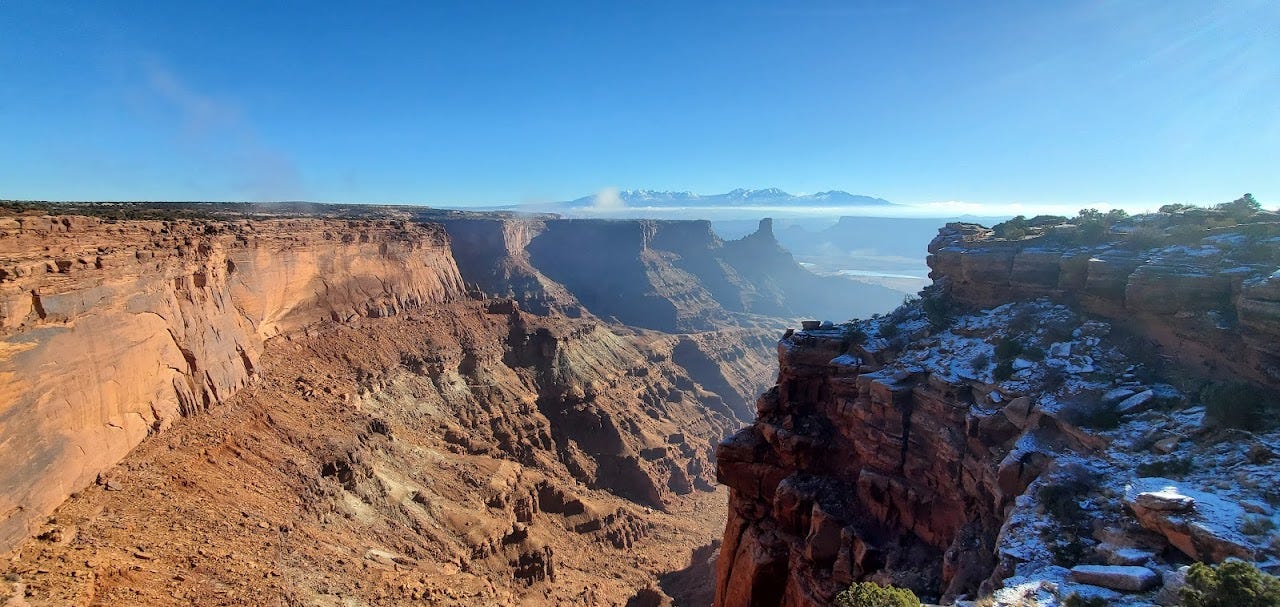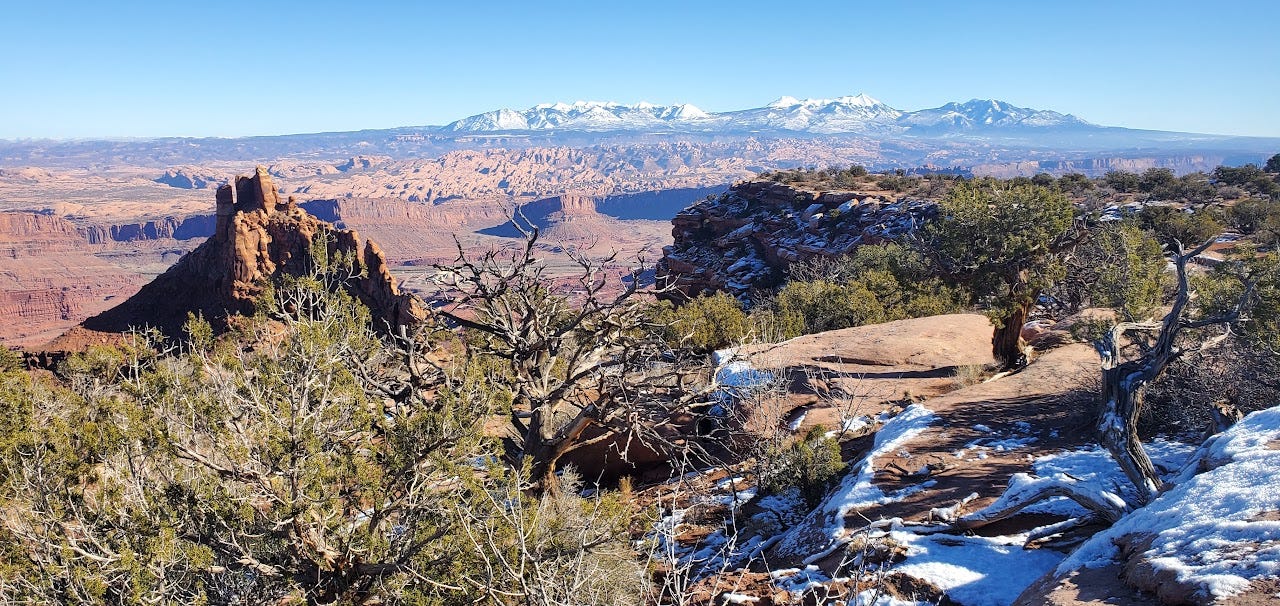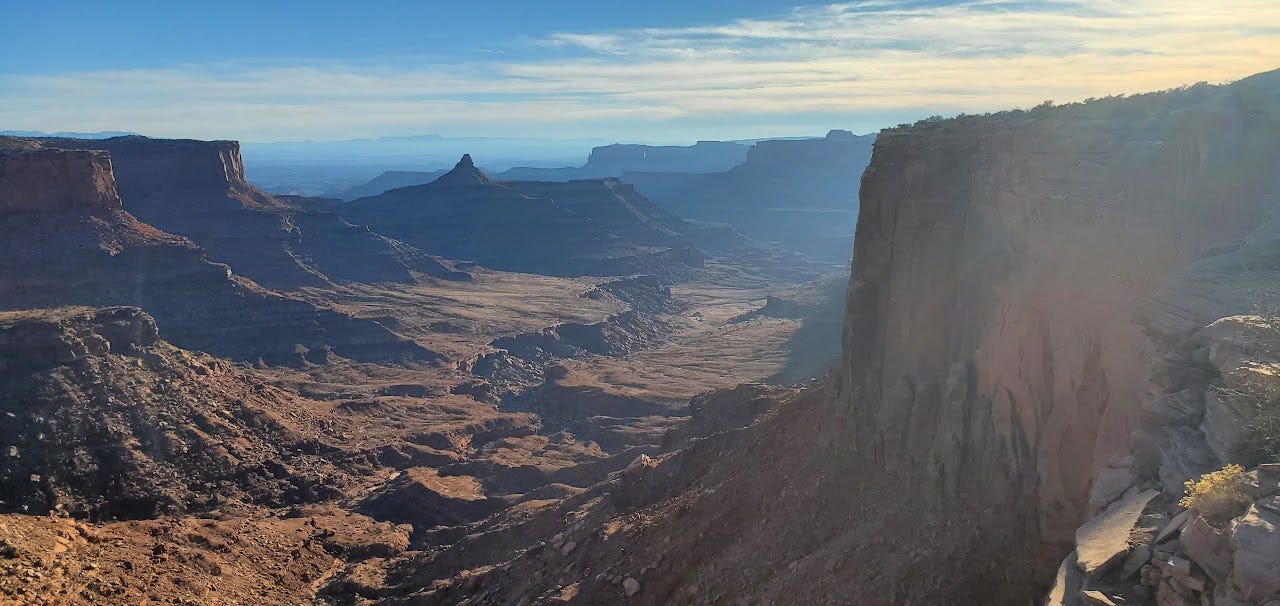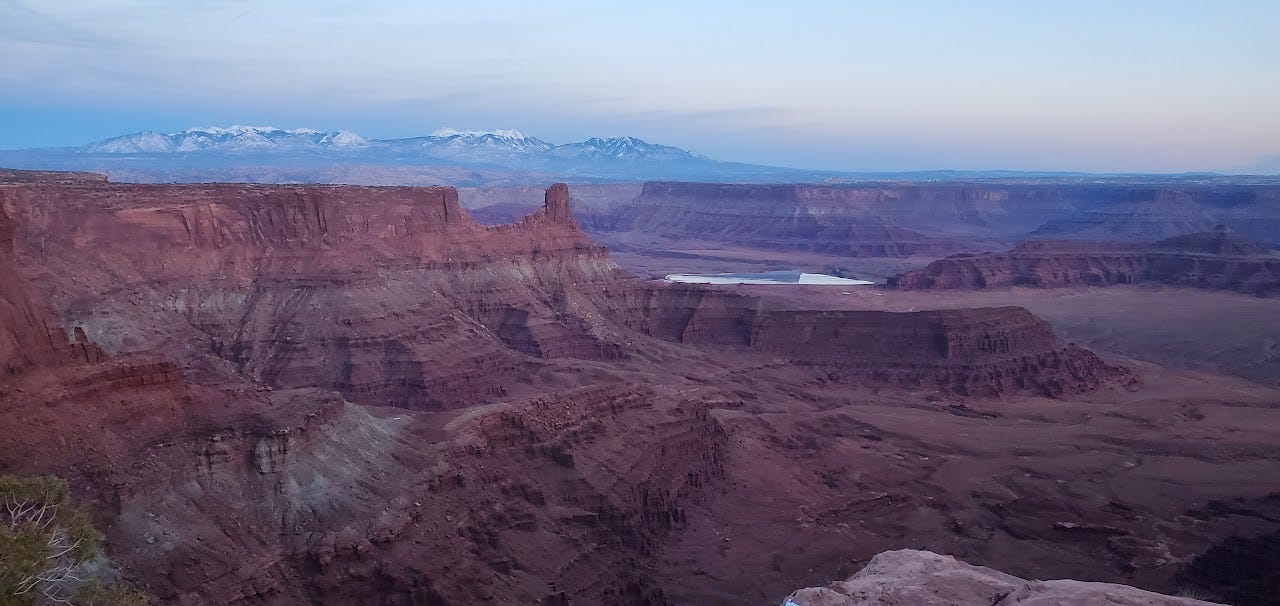There's a quality that is equal parts frightening and exhilarating about being tied into a rope that's thinner than your thumb and willingly dropping oneself over the precipice of a cliff; completely committing to the mercy of gravity (which has none) and the quality of one's own equipment with no grace for mistakes once the fateful final steps are made over the edge; dropping into an environment, the features of which are seemingly purgatorial as soon as you pull the rope from the anchor above. One must have confidence, but also trust that the obligation they are making comes with the promise of a possible escape. Many people have made sacrifices of life and limb in the seemingly innocuous pursuit of canyoneering, there have even been blockbuster movies about such hardships. Though similar in many respects to the ethos of rock climbing, such as man's constant endeavor to subvert Newton's laws, pushing the limits of his ability to move through the environment around him, it differs in that, with rock climbing, the grip to the rock gives one some sense of controlled defiance of the natural attraction to the ground below. Canyoneering embraces the fall to the ground, but the one doing the falling hopes that with the aid of technical tools, ropes, and rigging, the descent is completely on their terms.
Having completed several long distance hiking trails, I had a naive conception that I knew something about adventuring in the wilderness, but reality struck when I made my permanent pilgrimage out of the suburbs of South Florida and into Colorado, the heart of the American West. Quickly, I was exposed to all sorts of new ideas about how a person can physically endanger their lives in beautifully stunning landscapes. Amongst the array of activities that held allure to me was technical canyoneering. I was somewhat aware of the craft when, during lunch breaks, I would thirstily imbibe Youtube content, occasionally coming across a video of someone rappelling into some gorgeous canyon, but the concept was so foreign as to be as unobtainable as space travel. Now, residing in an environment where adventure sports are tantalizingly approachable meant that finally endeavoring to learn about them would not be simply academic, I could actually apply myself towards the pursuits. Canyoneering had an appeal in that seemingly all that was necessary was learning to incorporate ropes into the repertoire and then suddenly a vast array of travel opportunities and terrain would be open to me, especially within the desert canyons of Utah and Arizona. As with most things in life, the journey is never simple nor is it linear. I didn't actually know how to get into canyoneering without a mentor, but I knew I at least needed to learn rope skills and probably get more comfortable with those skills at heights. It was this train of thought, along with wanting to pursue the Colorado 14ers, that pushed me to take an intro to rock climbing course at my local gym and which essentially led to the genesis of my still humble mountaineering career. This introductory course opened up the landscape to me in all kinds of new ways.
If you have been following my stories for some time, you know that I am an avid peakbagger and that many of the trips I take require a serious mastery over exposure to heights and refined movement on steep, often unpredictable terrain. Within the first few months of me taking on rock climbing, Quinton, a friend from the Arizona Trail, visited me as he was driving through the Front Range and he had actually begun pursuing canyoneering in the intervening years since we had last crossed paths. He found a local route on a canyon beta specific website (who knew) and we went out to give it a try. Short of carrying me up the hillsides, he did almost all of the work necessary to get us down the route including building webbing anchors around natural objects and setting up our descending systems. Basically, all that I had to do was keep my hand on the brake strand and not plummet to the bottom of the rope in exaggerated fashion. The course was not too extreme with most of the rappels being short and low consequence if something were to go wrong, but we still had a blast that afternoon. However, Quinton was only passing through, so I still was without a dedicated mentor, and, like any nonlinear life journey, the idea of canyoneering kind of drifted out of focus as I went on to spend the majority of the last three years fully invested in building the skills and experiences to be confident in the high alpine environments around my state. The primary pursuit of crossing off my 14er list was supplemented by learning to rock climb, mostly in the gym environment, with the occasional outdoor climb. In that time, I took several trips to the canyon country of southern Utah, but never went outside my comfort zone of long distance backpacking or hard scrambling. Neither the mentor, nor companion I desired, ever materialized.
In Colorado, most serious hikers just want to hike and most serious climbers just want to climb. It’s difficult to convince people who fall into one of the two camps to go on adventures that combine the two, especially if it involves driving 6 hours or more. This changed when I met my partner in crime, Nicki, who shares a passion for hiking and climbing, but also the various ways of combining those worlds. When I suggested we should invest some time into technical canyoneering she was not in the least bit hesitant. Though Nicki was not a mentor per se, she was an eager teammate and now, with a willing participant at my side, I was reinspired towards the idea of learning the necessary skills and refining the knowledge I already possessed that would lead us into canyon country. We made it a goal and carved out the time to learn how to rappel, build anchors on both bolts and around natural objects, gear to bring etc etc. Having a passionate partner makes learning easy. Evenings spent on the couch were consumed with educational videos and conversations about what we were learning and wanted to do with that knowledge. There is nothing much more painful than trying to talk to someone about a subject in which you are passionate who does not also hold that passion. The pain goes both ways in that scenario, I am sure, but fortunately for us both, we shared the love and bolstered one another's desire to go find some new adventures.
In 2024, refining our partnership, Nicki and I completed numerous 14ers together while the Colorado weather was conducive, but as conditions became more severe, we set our sights on making our first joint sojourn to Moab. We had developed our knowledge just enough to be dangerous (to ourselves), but fortunately, we were well aware of our limitations. Our first visit would include a smattering of things we were confident in and our first canyonesque tour would be guided by none other than, Quinton, that friend from the Arizona trail who I mentioned earlier who had been busy living the nomadic dirtbag life and continuing to build his skills. Rounding out our experience and taking advantage of a little bit of all that southern Utah had to offer, the main activities from the trip would include a long trek around Dead Horse Point State Park, a multi pitch climb up the Looking Glass, an arch like domed feature with a picturesque window in it and stunning rappel from the top, and a tour to the top of the highest point in Arches National Park, Elephant Butte, which would include some hard scrambling, difficult route finding and multiple rappels. Though the hike was fantastic, the other two parts of our itinerary were certainly the highlights, offering a fantastic entree into sport to cut our teeth on the desert sandstone. Many of the skills we had acquired were still in their infancy or only analogous to the canyon environment and with a steep learning curve, ripe for mistakes. Like most of the activities I enjoy, a mistake could mean death.
Hiking around Dead Horse, in terms of adventure, was not particularly noteworthy, but the expansive views of the water carved country below it were awe inspiring. Being early December in Moab, the weather was definitely chilly, but the sunshine was warm, certainly far warmer than the frigid temperatures we were escaping back home in Colorado. With blue skies and no wind, we could not have asked for a more beautiful late Fall day. Simply hiking along the rims of the park gazing down at gorgeous rocks, looking across to the snow capped La Sals, and taking in the small wonders around us, had us mesmerized at every turn. Taking our time and acting like children, we enjoyed simple pleasures like throwing rocks through the thin layer of ice that hovered above the puddles in the numerous pock like potholes that lay in our path and were fascinated by the delicate crystalline hoar frost formations we found in the shaded spots, (which for some reason I didn't take any pictures of, so you'll have to take my word that they were worthy of attention) and that I of course delighted in scattering when I came across. With no need to hustle, we even went crawling unnecessarily into some of the weather carved pockets, if for no other reason than to get a funny picture and fully indulge in the playground that was Dead Horse. During our looping tour around the park we saw less than a handful of people and didn't leave until the sun was setting, fully satisfied by all it had to offer, but as breathtaking as the views were, we were ready to up the ante a bit and dive into the more difficult portions of our itinerary.
Adventure to be continued....





